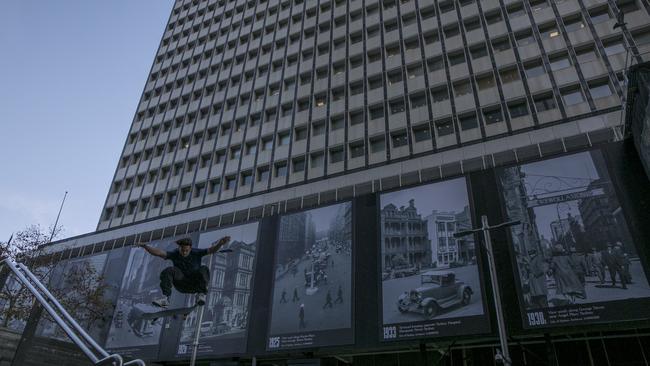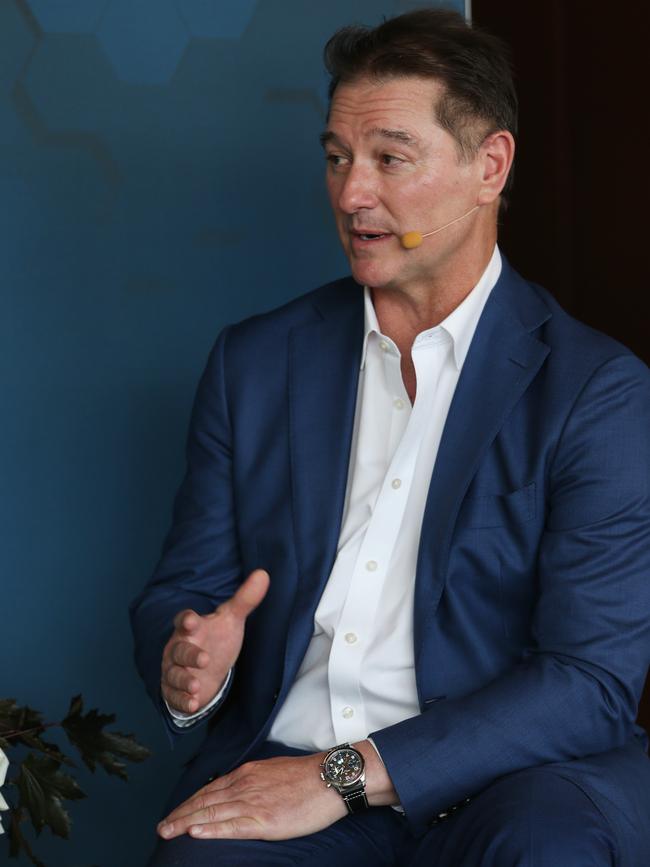
A bigger-than-expected rise of 4 per cent in the annual rate of the CPI indicator was the latest evidence that inflation is proving “sticky” at levels well above the RBA’s 2-3 per cent target band.
In a blow to struggling homeowners, the data cast doubt over whether interest rates are high enough to get inflation back to the central bank’s target in an acceptable time frame, placing pressure on the RBA to increase rates at its next meeting in August.
It came as economists worried that the start of tax cuts and a fresh round of energy bill relief from next week will worsen Australia’s inflation challenge, with a UBS survey of consumers finding that spending is likely to prove resilient in the face of past rate hikes.
The market-implied chance of the RBA lifting its cash rate target by another 25 basis points to 4.6 per cent at its August meeting roughly doubled to about 40 per cent after headline inflation hit a six-month high of 4 per cent in the year to May versus 3.8 per cent expected by economists.
Annual trimmed mean inflation rose to 4.4 per cent from 4.1 per cent in April although inflation excluding volatile items and holiday travel fell 1 percentage point to 4 per cent year-on-year.
“The upshot of today’s result is that it places enormous pressure on the Reserve Bank to not only not cut interest rates anytime soon, but potentially lift them further,” said Betashares chief economist David Bassanese.
“Although many of the factors holding up inflation are not directly sensitive to interest rates, the RBA needs to focus on the persistently high overall level of inflation – whatever its cause – and potentially use higher interest rates to produce offsetting declines in inflation wherever it can.”
Mr Bassanese said the concern remained that the longer inflation stays high, the greater the risk of it becoming embedded into inflation expectations and ongoing wage and price-setting behaviour – particularly given the economy, despite weak growth, is still operating at a high level of capacity.
After soaring to a multi-decade high of 8.4 per cent during the Covid-19 pandemic, inflation hit a two-year low of 3.4 per cent in December. Disinflation came as the RBA hiked to a 12-year high of 4.35 per cent between May 2022 and November 2023. But the rise in inflation since then suggests the disinflation has stalled and inflation may be re-accelerating.
Rate cuts were recently expected to start in September, but the consensus shifted to 2025 after March quarter inflation overshot estimates, the RBA considered rate hikes in May and June, and state and federal budgets added bigger-than-expected fiscal stimulus.
NAB pushed out its call on the timing of a first rate cut to May 2025 after the CPI data. “We now expect the RBA to remain on hold for longer, with a first rate cut now unlikely until May 2025, previously November 2024,” said NAB chief economist Alan Oster.
While expecting inflation to slow in the second half of 2024 assuming the labour market weakens, Mr Oster said it would be some time before the RBA board had the confidence to cut rates.

That would be likely only after several quarters of inflation annualising around the top of its target band.
Westpac pushed its expected timing of a first RBA interest rate cut out to November from September previously.
Deutsche Bank predicts the RBA will hike rates in August.
“Underlying inflation is intolerably high in Australia,” said Deutsche Bank’s Australian chief economist Phil Odonaghoe. Australia is the only G10 country where underlying inflation has increased since December.
This acceleration was “material” as trimmed mean inflation – the RBA’s preferred measure of inflation – rose to 4.4 per cent year-on-year, up 0.4 percentage points since December, while other G10 countries saw underlying inflation fall by an average of 0.9 percentage points.
“Moreover, the monthly CPI indicator shows that trimmed mean inflation is now running more than 0.5 percentage points higher than the RBA’s forecast of 3.8 per cent for the June quarter,” he added.
“Unless there is a stunning reversal in underlying inflation pressures in the month of June, we think that another material beat on the RBA’s near-term forecasts for trimmed mean inflation is looking very likely. That should prompt a rate hike.”
RBA assistant governor Chris Kent in his ABA speech on Wednesday described the RBA’s policy stance as “restrictive”, but Mr Odonaghoe questioned whether it was restrictive enough.
“On our estimates, we think the evidence shows that the RBA eased substantially more than either the Fed or the ECB during Covid and has subsequently tightened by substantially less,” he said. “We would argue that the acceleration in inflation evident in today’s CPI print for May provides tangible support of that conclusion.”
UBS also predicted an August rate hike as the RBA will be “quite uncomfortable” if June quarter inflation rose 1 per cent on quarter. UBS chief economist George Tharenou also warned of follow-up interest rate increases in November and February.
RBC pushed back its expectation on the start of RBA easing to the June quarter of 2025 and stuck with its call for a modest adjustment of just two cuts of 25 basis points.
May CPI was “markedly higher across the board” particularly the key trimmed measure, services and non-tradeable components, said RBC Australia chief economist Su-Lin Ong. “The data suggests upside to the full June quarter inflation print on 31 July following the upside surprise to March quarter CPI.
“In our view, the RBA should hike but may well tolerate higher inflation to protect the labour market which suggests no scope for any easing until well into 2025 and a cash rate that may stay on hold for the foreseeable future.”
Goldman Sachs said firmer inflationary pressures would delay the start of an RBA easing cycle to February versus its previous call of November, with a 25 per cent chance that the next move will be a hike if June quarter CPI data on July 31 surprises “materially to the upside”.




Australia’s stubbornly high inflation rate may lead to a restart of rate hikes, with the nation’s monthly CPI indicator for May described as “shocker”.